 About the recipes During the course of this book, I have included recipes for cooking with r, spruce and pine. These three plants taste different, but are interchangeable in each of the recipes that includes them. Using blue spruce or white r for the , I have included other plants that are arguably more sustainable (the juniper and the bamboo grow far quicker than a conifer ever would and require less energy to plant) and hold similar cultural signicance to Christmas trees. I have also included, where necessary, a list of specialist equipment that may be required for some of the recipes. How do I find a good tree to eat? A Christmas tree is a crop, just like an apple or an orange. Whether youre going to ingest it or not, it is good practice to make sure that it has been grown with as few chemicals as possible, in a fair environment and either locally and/or sustainably.
About the recipes During the course of this book, I have included recipes for cooking with r, spruce and pine. These three plants taste different, but are interchangeable in each of the recipes that includes them. Using blue spruce or white r for the , I have included other plants that are arguably more sustainable (the juniper and the bamboo grow far quicker than a conifer ever would and require less energy to plant) and hold similar cultural signicance to Christmas trees. I have also included, where necessary, a list of specialist equipment that may be required for some of the recipes. How do I find a good tree to eat? A Christmas tree is a crop, just like an apple or an orange. Whether youre going to ingest it or not, it is good practice to make sure that it has been grown with as few chemicals as possible, in a fair environment and either locally and/or sustainably.
There have been recent reports that Christmas tree growers and agricultural workers in some parts of the world like Georgia associations that I have come across, although I am sure there are plenty more. You could also try searching for Christmas tree rentals, which can be returned and replanted once Christmas is over. If possible, buy a live tree and replant it after Christmas to be reused the following year (that is, if you havent eaten all the needles rst and you have somewhere to plant it). How to prepare your tree needles Spruce, r and pine needles can be very sharp, so care must be taken not to hurt your ngers while preparing them for cooking. You will need a pair of large, sharp scissors and a big bowl. Snip some larger branches from your tree.
Wash the branches under cold, running water, making sure that you get rid of all possible bits of mud and dirt. You may notice that there are balls of sap, but this is safe to eat, as are the dried buds which might be at the end of some of the branches. Turn the branch upside down over a bowl so that the needles make a chevron shape. Using scissors, cut upwards so that the needles fall directly into the bowl. I usually then wash the snipped needles once more before using them. Is this going to kill me? If you stick to pine, r and spruce, no.
However, other common types of trees bought for Christmas include cedar and cypress both of which are inedible. Yew trees can often be mistaken for Christmas trees but they are INCREDIBLY POISONOUS so dont eat them! Like with any sort of foraging, please make sure you know exactly which plant you are eating before you try it! It should also be noted that all Christmas tree needles are sharp and so you should avoid eating uncooked, un-chopped needles theyre a bit like shbones and can be just as dangerous. I would also like to point out that any essential oils made from r, spruce and pine are not really recommended for consumption just use them for smelling or having a nice massage with. Sterilising your jars Quite a few recipes call for sterilisation of glass jars, such as Kilner or Mason jars. There are two ways you can do this. The rst is either to wash whichever (preferably recycled) jar you plan on using with hot, soapy water and to stick it in a hot oven set to 100C (210F/gas ) for at least 20 minutes.
Alternatively, run your jars through a hot dishwasher cycle. Easy peasy. This will stop your ferments and preserves from going mouldy. 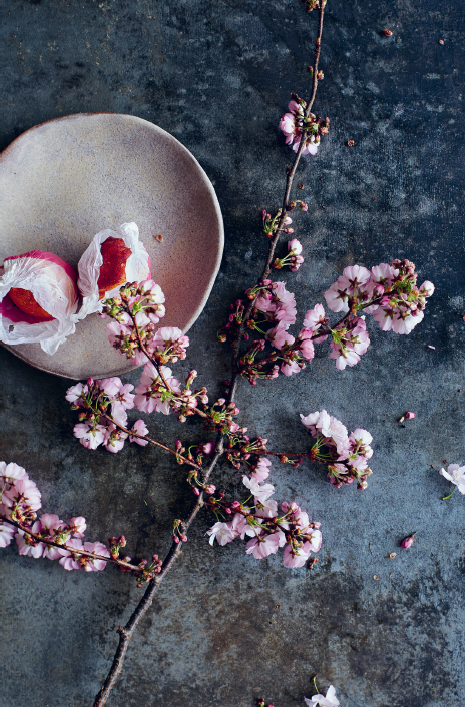 This recipe book is about reuse, recycling and resourcefulness three important elements of sustainability. There are many other ways to embark on an eco-friendlier lifestyle, such as ying less, opting for public transport, avoiding fast fashion, using natural household and personal hygiene products and paying close attention to the way that we eat. Consuming animal products is more detrimental to the planet overall than Christmas tree farming.
This recipe book is about reuse, recycling and resourcefulness three important elements of sustainability. There are many other ways to embark on an eco-friendlier lifestyle, such as ying less, opting for public transport, avoiding fast fashion, using natural household and personal hygiene products and paying close attention to the way that we eat. Consuming animal products is more detrimental to the planet overall than Christmas tree farming.
Animal agriculture takes up more space, more energy and emits gases that contribute to climate change, such as methane. With this in mind, you may question why this book isnt plant-based. These non-veggie recipes come from the earlier, more carnivorous days of the How To Eat Your Christmas Tree project and I have left them in, with notes in some cases on vegan/veggie alternatives, for the very fact that they are incredibly tasty. I do strongly suggest, however, treating these recipes (and the choice of consuming animal products in general) carefully. In the same way that I have talked about treating, sourcing and buying Christmas trees, I would ask that we are all more mindful with our meat, sh and dairy intake. Buy the best quality of these that you can afford, which might mean buying less, but this too is a positive step for the environment.
Choosing products that are organic, seasonal and local from small-batch farmers and shermen who understand how to be sympathetic to the environment is now necessary in a world that is in the midst of a food and agricultural identity crisis. By all means, enjoy your food! But we would also all do well to treat everything that we grow, that is alive in some way, as something that is not expendable and understand that all these things come with a higher environmental price than we might have realised in the past. Get rid of the wrap Dont use wrapping paper, make sure you recycle your cards or, better still, send an e-card! Get in contact with your local council to ask for a more coherent, sustainable and efficient post-Christmas recycling scheme, which includes more visibility on how to recycle Christmas trees, paper, food and, often forgotten, batteries (of which we use A LOT of over the Christmas period). Do we need to be keeping trees at all? I know it sounds counterintuitive, as Ive just written a book about eating trees, but perhaps the answer is to nd another way to celebrate Christmas. Could you draw a tree on some chalkboard or a large sheet of paper, or make a tree out of recycled bits and bobs? Instead of chopping down and buying trees, could you get in touch with your local Christmas tree farmer and ask them to keep the tree planted? Perhaps you could sponsor a tree or nd a really great tree planting campaign and support it either nancially or by physically spending a weekend outdoors planting in your area. It sounds like a lot more effort than just picking a tree from your local homewares store, but it really does have a positive impact on the environment.
Have yourself a veggie little Christmas Christmas is denitely a scary time if youre a farm animal. In 2016, it was estimated that 10 million turkeys were eaten on Christmas Day in the UK. But now veggie Christmases in the UK are on the up, rising by 25 per cent in 2019. If you cant do without meat on Christmas Day, no problem, but why not make sure it is a sustainably farmed animal and balance your meat feast by reducing the amount of animal products you eat overall throughout the festive period, and indeed during the rest of the year. Less stuff, more support Instead of stocking llers, concentrate on buying your loved ones environmentally friendly, sustainable and/or charitable gifts. Or, forgo physical gifts altogether and donate to charity or buy/request an experience that you can all do together.
Deliveries and internet shopping contribute massively to carbon emissions try buying your presents from a local producer or shop in person. New Years resolutions Once were done overdosing on everything over Christmas, its time to give something up for the beginning of the year. However, instead of imposing impossible promises on yourself, why not make a pledge to the environment? Swap to a plastic-free household, give up as much air travel as possible, try eating meat or sh just once a week it may be a better way of redirecting your energy.
Next page
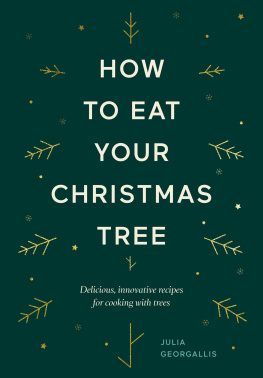
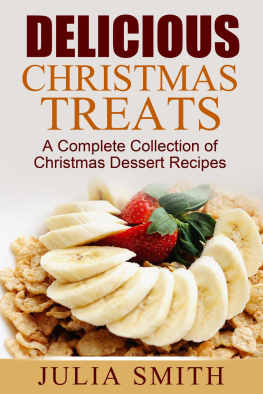





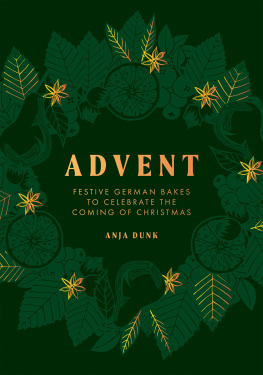
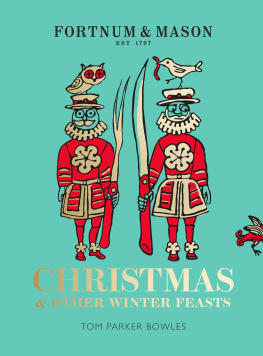

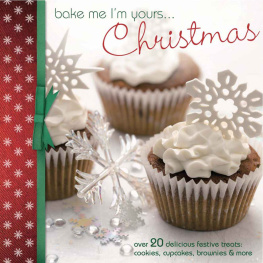
 About the recipes During the course of this book, I have included recipes for cooking with r, spruce and pine. These three plants taste different, but are interchangeable in each of the recipes that includes them. Using blue spruce or white r for the , I have included other plants that are arguably more sustainable (the juniper and the bamboo grow far quicker than a conifer ever would and require less energy to plant) and hold similar cultural signicance to Christmas trees. I have also included, where necessary, a list of specialist equipment that may be required for some of the recipes. How do I find a good tree to eat? A Christmas tree is a crop, just like an apple or an orange. Whether youre going to ingest it or not, it is good practice to make sure that it has been grown with as few chemicals as possible, in a fair environment and either locally and/or sustainably.
About the recipes During the course of this book, I have included recipes for cooking with r, spruce and pine. These three plants taste different, but are interchangeable in each of the recipes that includes them. Using blue spruce or white r for the , I have included other plants that are arguably more sustainable (the juniper and the bamboo grow far quicker than a conifer ever would and require less energy to plant) and hold similar cultural signicance to Christmas trees. I have also included, where necessary, a list of specialist equipment that may be required for some of the recipes. How do I find a good tree to eat? A Christmas tree is a crop, just like an apple or an orange. Whether youre going to ingest it or not, it is good practice to make sure that it has been grown with as few chemicals as possible, in a fair environment and either locally and/or sustainably. This recipe book is about reuse, recycling and resourcefulness three important elements of sustainability. There are many other ways to embark on an eco-friendlier lifestyle, such as ying less, opting for public transport, avoiding fast fashion, using natural household and personal hygiene products and paying close attention to the way that we eat. Consuming animal products is more detrimental to the planet overall than Christmas tree farming.
This recipe book is about reuse, recycling and resourcefulness three important elements of sustainability. There are many other ways to embark on an eco-friendlier lifestyle, such as ying less, opting for public transport, avoiding fast fashion, using natural household and personal hygiene products and paying close attention to the way that we eat. Consuming animal products is more detrimental to the planet overall than Christmas tree farming.